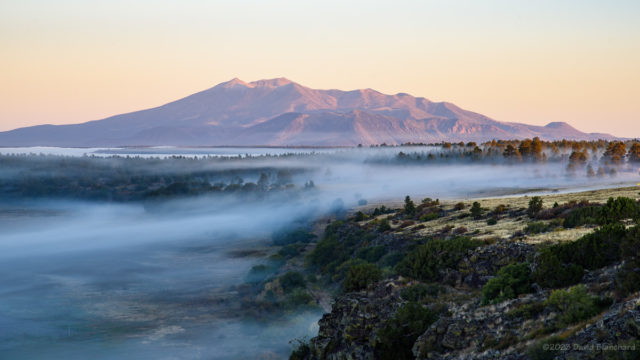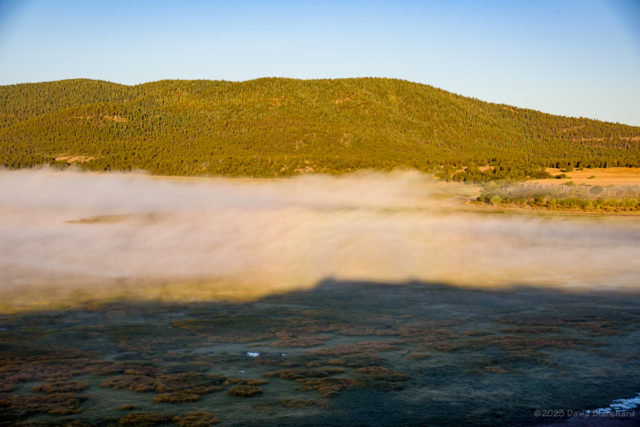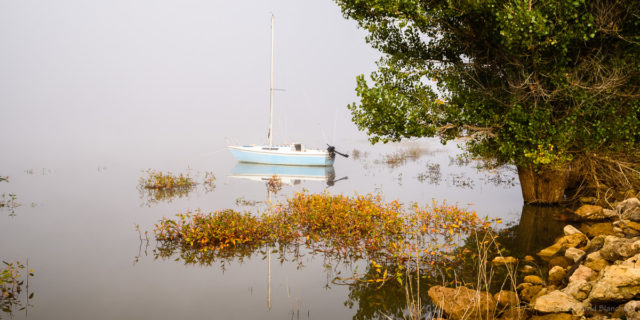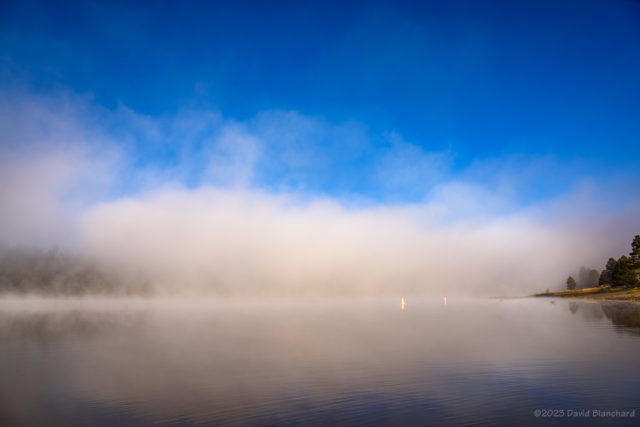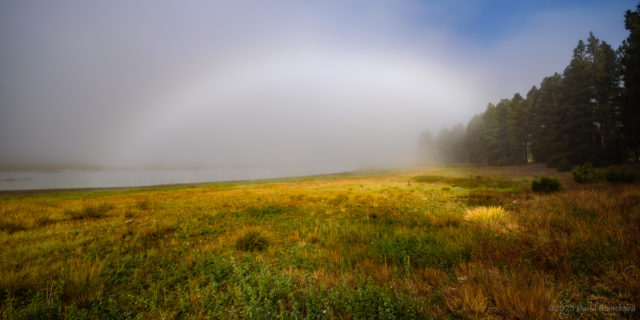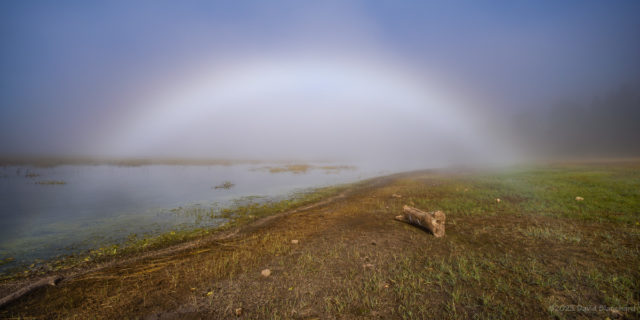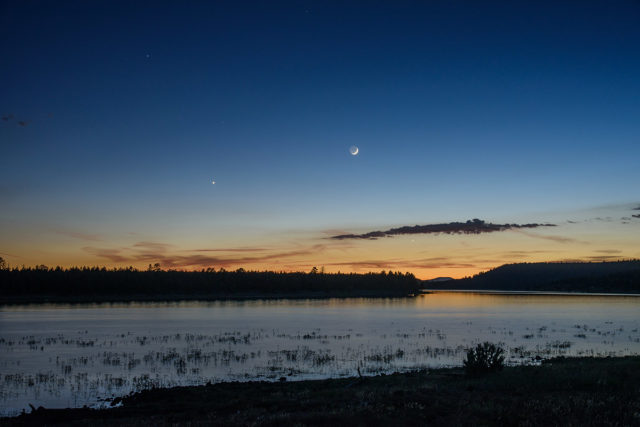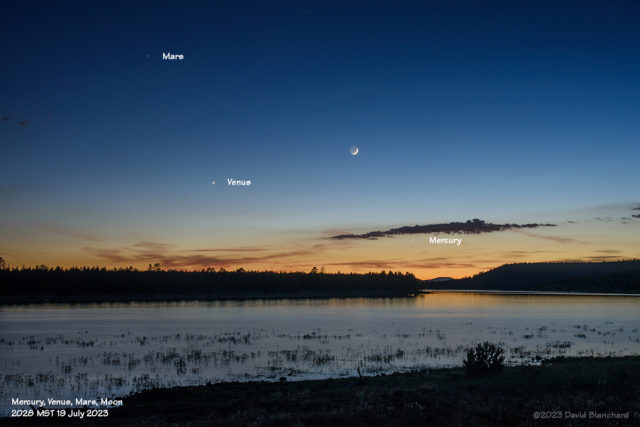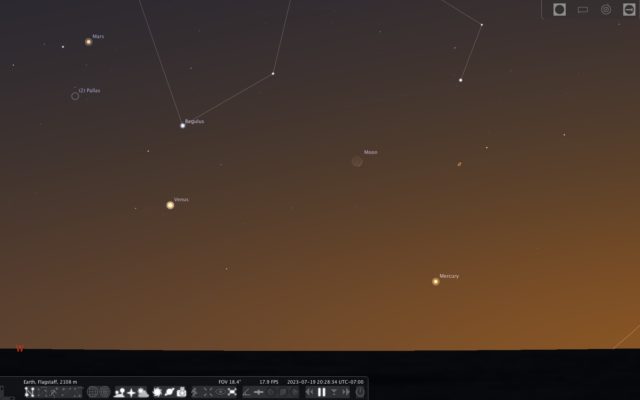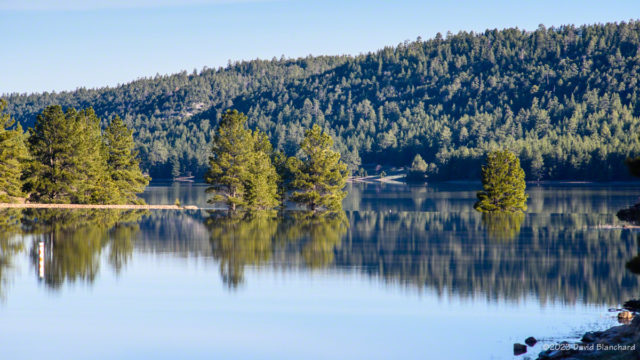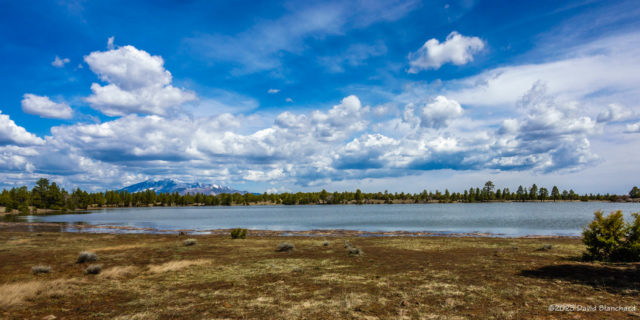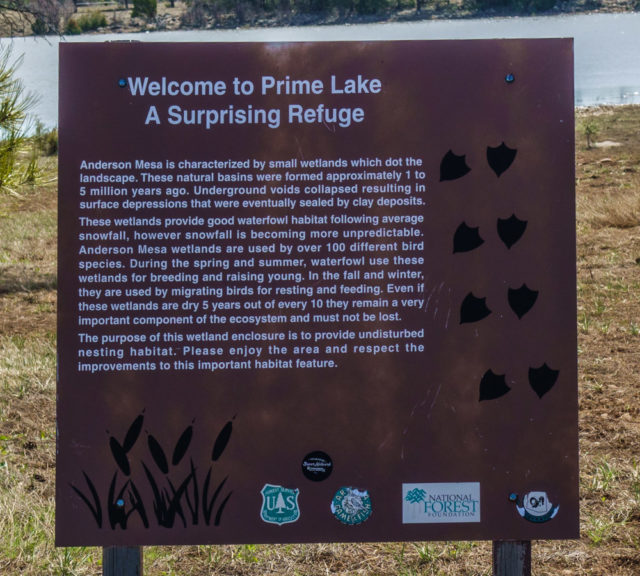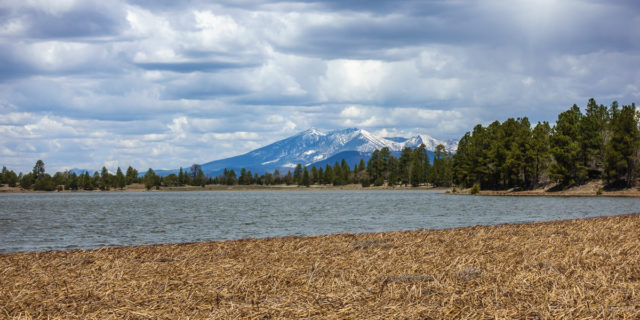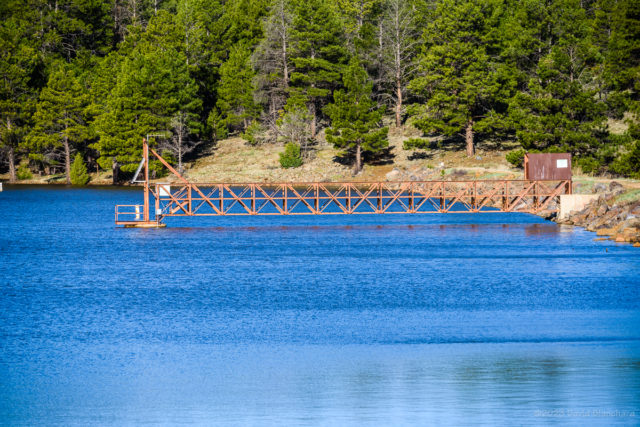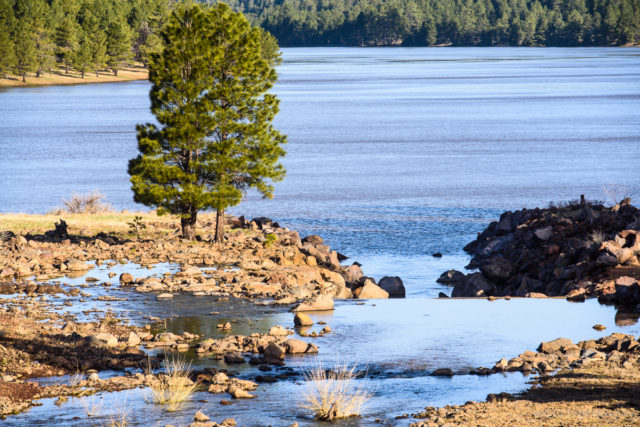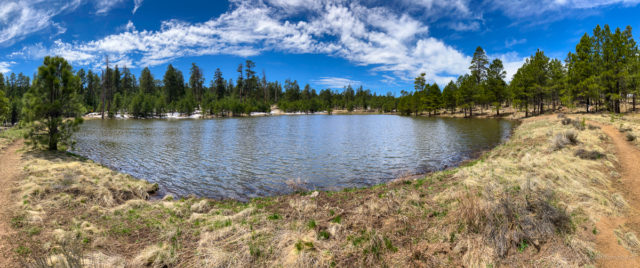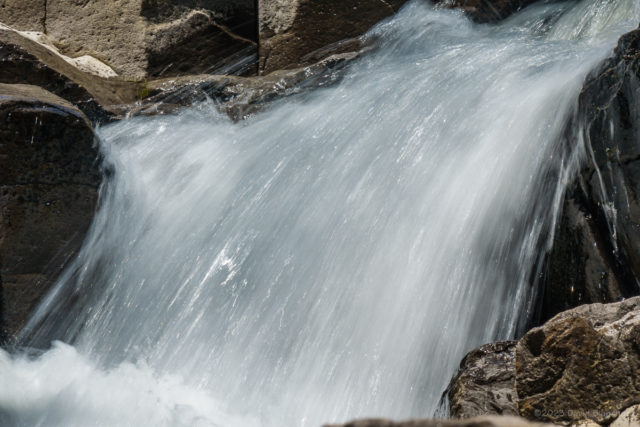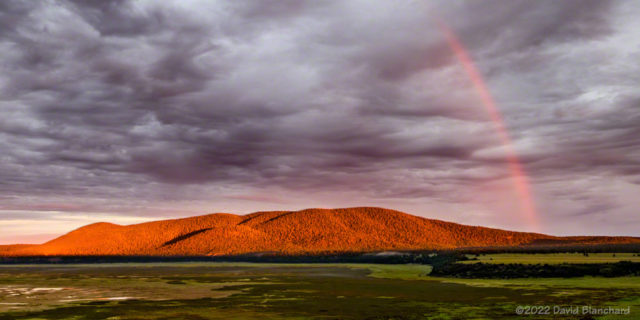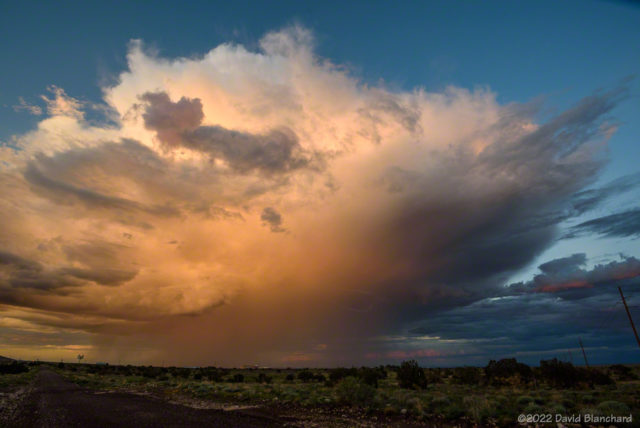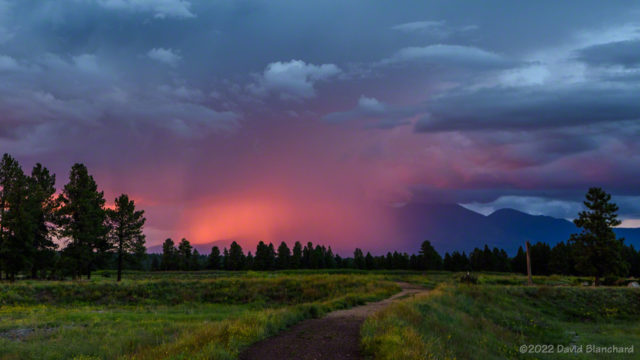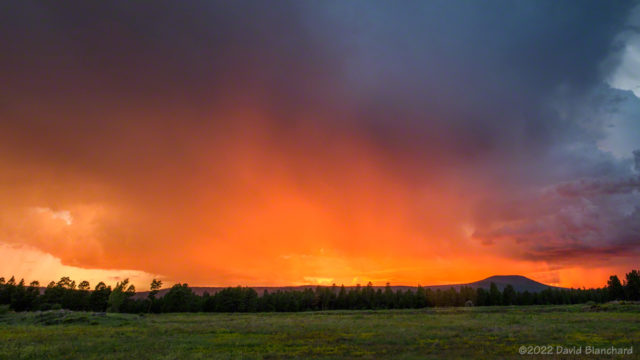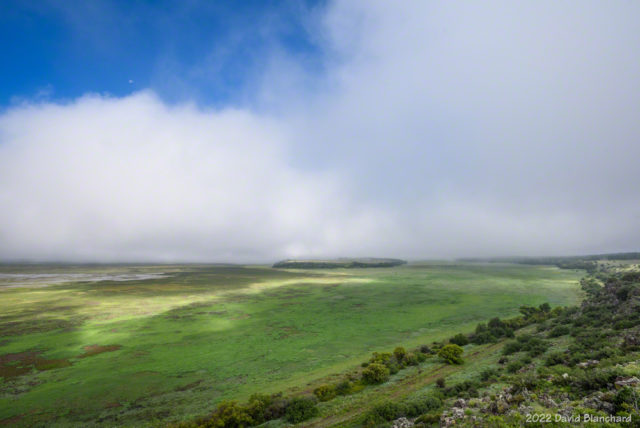A previous post showed many images of Comet C/2023 A3 (Tsuchinshan-ATLAS) taken when the comet was visible in the morning sky. The comet then moved between the Earth and Sun making it difficult to see. A period of 10 days passed between my last morning images and my first evening images.
At first, the comet was difficult to see in the bright evening twilight and the presence of the Moon made it even more difficult. But each day the Moon rose later in the evening and the comet rose higher in the western sky. I was able to take advantage of clear skies and shot photographs on eight days. Here are some of the best photographs from those sessions.
13 October 2024
I had already shot images of the comet while looking to the east across Ashurst Lake when it was a morning object. Now it was time to shoot looking to the west across the Lake. The comet was very bright and easy to see. I also shot a long sequence of images to create a time-lapse video of the comet setting in the west.

Time-lapse video of the comet setting behind Ashurst Lake near Flagstaff, Arizona.
14 October 2024
The next evening I set up at the Arizona Snowbowl parking area–along with dozens of other comet watchers. It was fun to listen to folks admiring the comet and the joy from the kids when they were first able to spot it in the darkening sky. The anti tail was even easier to see on this night compared to the previous evening.

16 October 2024
The Moon was still a factor in the evenings but the comet was getting higher in the sky so it balanced out. On this evening I went to The Narrows at Upper Lake Mary since that section of the lake is oriented WSW-ENE. This meant I could photograph the comet above the water and get a reflection of it in the water. That worked out pretty well.


20 October 2024
A few days of clouds shut me down but by this day it was very clear and the Moon was no longer a problem. I opted to use a longer telephoto (180mm) for these shots even though it might truncate part of the tail. The anti tail is still visible but is much less striking than in earlier days.

21 October 2024
The comet was continuing to rise higher in the western sky and was closer to the Milky Way so I switched back to ultra-wide angle lenses to capture both. Bonus: I was able to again capture the comet and tail reflected in the waters of Lake Mary. For the very wide image shown here I did a composite. The first image had star tracking turned on to get sharp stars and comet; the second image had tracking off to get sharp foreground. These were then combined and blended in software.

23 October 2024
The comet continued to climb higher, become dimmer, and have a shorter tail as it moved away from Earth and Sun. I switched to a short telephoto (85mm) to shoot a sequence of images which were then stacked to reduce image noise. I was also able to use the sequence to create a short time-lapse video to show the movement of the comet over a period of about 45 minutes.

Time-lapse showing the motion of the comet against the background of stars. 23 October 2024.
25 October 2024
As the comet climbed higher it also was closer to the Milky Way and I again tried to get a shot with both features. This was taken with at 35mm focal length.

31 October 2024
As the comet retreats it is getting smaller in the sky and it is better to use medium length telephoto lenses. Here is an image taken with the Nikkor 180mm ED AI-S lens, a legacy, manual focus lens.

What’s next?
We are once again in a period of clouds. When skies are once again clear the comet will be much farther away, smaller, and dimmer. At this point, it will require longer exposures and bigger telephoto lenses. It should be fun!
